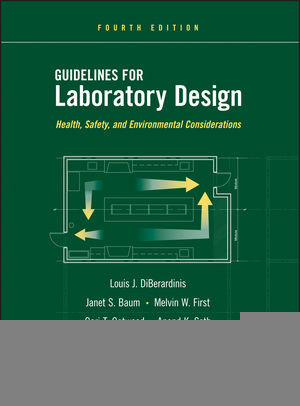(Ebook) Guidelines for Laboratory Design: Health, Safety, and Environmental Considerations, Fourth Edition by Louis J. DiBerardinis, Janet S. Baum, Melvin W. First, Gari T. Gatwood, Anand K. Seth(auth.) ISBN 9780470505526, 9781118633816, 0470505524, 1118633814
Proven and tested guidelines for designing ideal labs for scientific investigationsNow in its Fourth Edition, Guidelines for Laboratory Design continues to enable readers to design labs that make it possible to conduct scientific investigations in a safe and healthy environment. The book brings together all the professionals who are critical to a successful lab design, discussing the roles of architects, engineers, health and safety professionals, and laboratory researchers. It provides the design team with the information needed to ask the right questions and then determine the best design, while complying with current regulations and best practices. Guidelines for Laboratory Design features concise, straightforward advice organized in an easy-to-use format that facilitates the design of safe, efficient laboratories. Divided into five sections, the book records some of the most important discoveries and achievements in: Part IA, Common Elements of Laboratory Design, sets forth technical specifications that apply to most laboratory buildings and modulesPart IB, Common Elements of Renovations, offers general design principles for the renovation and modernization of existing labsPart II, Design Guidelines for a Number of Commonly Used Laboratories, explains specifications, best practices, and guidelines for nineteen types of laboratories, with three new chapters covering nanotechnology, engineering, and autopsy labsPart III, Laboratory Support Services, addresses design issues for imaging facilities, support shops, hazardous waste facilities, and laboratory storeroomsPart IV, HVAC Systems, explains how to heat, cool, and ventilate labs with an eye towards energy conservationPart V, Administrative Procedures, deals with bidding procedures, final acceptance inspections, and sustainabilityThe final part of the book features five appendices filled with commonly needed data and reference materials. This Fourth Edition is indispensable for all laboratory design teams, whether constructing a new laboratory or renovating an old facility to meet new objectives.Content: Chapter 1 Building Considerations (pages 3–64): Chapter 2 Laboratory Considerations (pages 65–107): Chapter 3 Renovations: Building Considerations (pages 123–135): Chapter 4 Renovations: Laboratory Considerations (pages 136–139): Chapter 5 General or Analytical Chemistry Laboratory (pages 143–149): Chapter 6 High?Toxicity Laboratory (pages 150–155): Chapter 7 Nanotechnology Laboratories (pages 156–159): Chapter 8 Engineering Laboratories (pages 160–172): Chapter 9 Pilot Plant: Chemical, Engineering, and Biological (pages 173–176): Chapter 10 Physics Laboratory (pages 177–181): Chapter 11 Controlled Environment Room: Hot or Cold (pages 182–186): Chapter 12 High?Pressure Laboratory (pages 187–189): Chapter 13 Radiation Laboratory (pages 190–195): Chapter 14 Biosafety Laboratory (pages 196–215): Chapter 15 Clinical Laboratories (pages 216–226): Chapter 16 Teaching Laboratory (pages 227–237): Chapter 17 Gross Anatomy Laboratory (pages 238–245): Chapter 18 Pathology Laboratory (pages 246–252): Chapter 19 Autopsy Laboratory (pages 253–261): Chapter 20 Morgue Facility (pages 262–270): Chapter 21 Open or Team Research Laboratory (pages 271–276): Chapter 22 Animal Research Laboratory (pages 277–298): Chapter 23 Microelectronics and Cleanroom Laboratories (pages 299–314): Chapter 24 Printmaking Studio (pages 315–324): Chapter 25 Imaging and Photographic and Facilities (pages 327–338): Chapter 26 Support Shops (pages 339–347): Chapter 27 Hazardous Chemical, Radioactive, and Biological Waste?Handling Rooms (pages 348–359): Chapter 28 Laboratory Storerooms (pages 360–368): Chapter 29 HVAC Systems (pages 371–391): Chapter 30 Fans (pages 392–396): Chapter 31 Air Cleaning (pages 397–403): Chapter 32 Laboratory Hoods and Other Exhaust Air Contaminant?Capture Facilities and Equipment (pages 404–421): Chapter 33 Exhaust Air Ducts and Accessories (pages 422–425): Chapter 34 Variable?Air?Volume Systems (pages 426–435): Chapter 35 Energy Conservation (pages 436–450): Chapter 36 Project Execution and Bidding Procedures (pages 453–459): Chapter 37 Commissioning and Final Acceptance Criteria (pages 460–470): Chapter 38 Sustainable Laboratory Design (pages 471–479):
*Free conversion of into popular formats such as PDF, DOCX, DOC, AZW, EPUB, and MOBI after payment.


